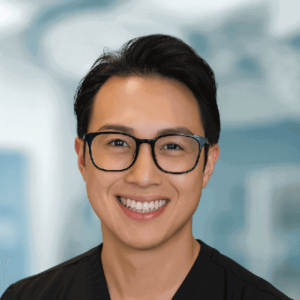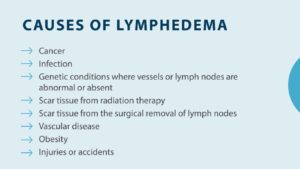Lymphedema is a chronic condition characterized by swelling in the arms and legs, often resulting from a compromised lymphatic system. Individuals affected by lymphedema may experience a range of symptoms that can significantly impact their quality of life. While medication is a common approach to managing this condition, there are numerous effective, non-pharmacological ways to alleviate symptoms and improve overall well-being. This article will explore how to manage lymphedema symptoms without medication, focusing on lifestyle changes, treatment options, and preventive measures.
What Are the Common Lymphedema Symptoms to Watch For?
What signs indicate the presence of lymphedema?
The signs of lymphedema can vary, but the most common symptom is swelling in an arm or leg. This swelling, known as lymphedema swelling, can be mild or severe and is often accompanied by a feeling of heaviness or tightness in the affected area. Other symptoms may include pain, restricted movement, and changes in skin texture, such as thickening or hardening. Recognizing these early signs is crucial for effective lymphedema treatment, as it allows for timely intervention to manage symptoms and prevent further complications.
How does lymphedema affect the lymphatic system?
Lymphedema affects the lymphatic system by disrupting the normal flow of lymph fluid, which is essential for immune function and fluid balance in the body. When lymph nodes are removed or damaged during cancer treatment, such as breast cancer treatment, lymphatic fluid can accumulate in the surrounding tissues, leading to swelling. This accumulation can compromise the lymphatic system’s ability to transport proteins, fats, and waste products, ultimately causing additional symptoms and complications if left unmanaged.
What are the stages of lymphedema symptoms?
Lymphedema symptoms progress through several stages. The first stage is characterized by mild swelling that may fluctuate throughout the day but can be reduced with elevation and compression. In the second stage, swelling becomes more persistent, and the skin may begin to feel firmer. The third stage, known as severe lymphedema, involves significant swelling, skin changes, and possible complications such as infection. Understanding these stages helps individuals monitor their condition and seek appropriate lymphedema treatment when necessary.
What Are the Causes of Lymphedema and How Can They Be Managed?
What is the primary cause of lymphedema?
The primary cause of lymphedema is the disruption of the lymphatic system, often due to the removal or damage of lymph nodes during surgical interventions or radiation therapy, particularly in cancer treatment. Breast cancer treatment is a common example, where lymph nodes in the underarm region may be affected. Other potential causes include infections, trauma, and genetic conditions that may predispose individuals to develop lymphedema. Understanding these causes is essential for developing a targeted lymphedema treatment plan.
How can cancer treatment lead to lymphedema?
Cancer treatment can lead to lymphedema through the surgical removal of lymph nodes, which compromises the lymphatic system’s integrity. Radiation therapy can also cause scarring and inflammation in the lymphatic vessels, further hindering lymphatic drainage. As a result, individuals who undergo cancer treatment, particularly for breast cancer, may face an increased risk for lymphedema. Awareness of this risk allows patients to take proactive steps in managing their condition and reducing swelling.
What are the differences between primary and secondary lymphedema?
Primary lymphedema is a rare, inherited condition that occurs when lymphatic vessels are underdeveloped or absent, often manifesting at birth or during puberty. In contrast, secondary lymphedema is more common and arises from damage to the lymphatic system due to external factors, such as cancer treatment, infections, or trauma. Understanding the differences between primary and secondary lymphedema is crucial for determining the appropriate management strategies and treatment options.
What Are Effective Ways to Manage Lymphedema Symptoms?
How can lifestyle changes help manage lymphedema?
Lifestyle changes play a significant role in managing lymphedema symptoms. Engaging in regular physical activity can improve lymphatic circulation and reduce swelling. Activities such as walking, swimming, and specific exercises designed for lymphedema patients can promote fluid drainage from the affected area. Additionally, maintaining a healthy weight is essential, as excess weight can exacerbate lymphedema symptoms. Staying hydrated and avoiding prolonged periods of inactivity can further enhance overall lymphatic health.
What exercises are recommended to reduce swelling?
Exercises tailored to individuals with lymphedema can significantly help reduce swelling and improve mobility in the affected limbs. Gentle stretching, range-of-motion exercises, and resistance training can all contribute to lymphatic drainage. Specific exercises may include arm raises, ankle pumps, and wrist rotations for upper and lower body lymphedema. A certified lymphedema therapist can provide personalized exercise recommendations that align with an individual’s capabilities and condition, ensuring a safe and effective approach to managing lymphedema symptoms.
What role does diet play in managing lymphedema?
A well-balanced diet is crucial for managing lymphedema, as certain foods can contribute to inflammation and swelling. Incorporating anti-inflammatory foods, such as fruits, vegetables, whole grains, and healthy fats, can support lymphatic function. Reducing salt intake can also help prevent fluid retention, which is particularly beneficial for individuals experiencing lymphedema. Staying mindful of dietary choices and maintaining a healthy lifestyle can enhance the overall effectiveness of lymphedema treatment and care.
What Treatment Options Are Available for Lymphedema Without Medication?
What are the benefits of seeing a lymphedema therapist?
Consulting with a lymphedema therapist offers numerous benefits for individuals managing lymphedema. These certified professionals specialize in creating personalized treatment plans that may include manual lymphatic drainage, compression therapy, and education on self-care techniques. They can also guide patients in recognizing early signs of lymphedema and provide strategies to prevent infection in affected areas. By working with a lymphedema therapist, individuals can gain valuable insights into managing their symptoms effectively.
How does compression therapy help in managing lymphedema?
Compression therapy is a cornerstone of lymphedema treatment, as it helps reduce swelling and improve lymphatic flow. This therapy involves wearing compression garments, such as sleeves or stockings, designed to apply gentle pressure to the affected area. This pressure encourages the movement of lymph fluid and prevents further accumulation. Regular use of compression garments, combined with other management strategies, can lead to significant improvements in lymphedema symptoms and overall quality of life.
What surgical treatment options exist for lymphedema?
For individuals with severe lymphedema, surgical treatment options may be considered when conservative measures are insufficient. These options include lymph node transfer and liposuction to remove excess fatty tissue. Lymph node transfer involves relocating healthy lymph nodes to the affected area to restore lymphatic drainage. Liposuction, on the other hand, targets the removal of fibrotic tissue that can accumulate in advanced cases. Consulting with a healthcare provider specializing in lymphedema can help determine the most appropriate surgical treatment based on individual circumstances.
How Can You Prevent or Reduce the Risk of Developing Lymphedema?
What steps can be taken post-cancer treatment to prevent lymphedema?
Post-cancer treatment, individuals can take proactive steps to reduce the risk of developing lymphedema. Engaging in gentle exercises, adhering to a healthy lifestyle, and maintaining a healthy weight are essential components of prevention. Additionally, individuals should be vigilant about monitoring their bodies for any early signs of lymphedema, such as swelling or changes in skin texture, and seek guidance from healthcare providers on appropriate preventive measures.
How to recognize early signs to prevent worsening of lymphedema?
Recognizing early signs of lymphedema is critical for preventing the condition from worsening. Individuals should be aware of any unusual swelling in the arms or legs, feelings of heaviness, or skin changes in the affected areas. Seeking prompt evaluation and intervention at the first signs can help manage symptoms effectively and prevent the progression of lymphedema. Regular check-ups with healthcare providers can aid in early diagnosis and the development of a tailored treatment plan.
What are some daily habits to prevent infection in affected areas?
Preventing infection in areas affected by lymphedema is vital for overall health. Individuals should maintain good hygiene by keeping the skin clean and moisturized, avoiding cuts or injuries, and promptly treating any wounds. Wearing protective clothing when engaging in activities that could lead to injury is also advisable. Additionally, practicing good nail care and avoiding extreme temperatures can help reduce the risk of complications associated with lymphedema. By adopting these daily habits, individuals can significantly enhance their ability to manage lymphedema symptoms and prevent further complications.
FAQS
Q: What is lymphedema and what are its symptoms?
A: Lymphedema is swelling that occurs due to a buildup of lymph fluid in the tissues, often affecting the legs and arms. Symptoms of lymphedema may include swelling in the affected area, a feeling of heaviness or tightness, restricted range of motion, and recurring infections.
Q: What are some common causes of lymphedema?
A: Lymphedema can be caused by damage to the lymphatic system, which may occur after surgery, radiation therapy, or an infection. Conditions such as cancer and lymphedema, particularly breast cancer, can also contribute to its development.
Q: How is lymphedema diagnosed?
A: Lymphedema diagnosis typically involves a physical examination by a healthcare provider, who will assess symptoms of lymphedema and may order imaging tests such as lymphoscintigraphy or ultrasounds to evaluate the lymphatic system.
Q: How can I manage lymphedema without medication?
A: Managing lymphedema without medication can include various lifestyle changes and treatments such as exercise for lymphedema, compression garments, and manual lymphatic drainage. Additionally, maintaining a healthy weight and avoiding injury can help manage your symptoms.
Q: What are some effective ways to treat lymphedema?
A: Effective ways to treat lymphedema may include the use of compression therapy, engaging in physical activities tailored for lymphedema, and practicing skin care to prevent infections. These treatment methods can help lymphedema and reduce swelling.
Q: Can exercise help with lymphedema management?
A: Yes, exercise can be beneficial for people with lymphedema. Gentle activities that promote lymphatic flow, such as walking, swimming, or specialized exercises for lymphedema, can help improve mobility and reduce swelling.
Q: What complications can arise from untreated lymphedema?
A: Untreated lymphedema may lead to complications such as skin infections, lymphangitis, and in severe cases, lymphangiosarcoma. It is crucial to monitor your condition and consult a healthcare provider for treatment of lymphedema.
Q: How can I prevent lymphedema from worsening?
A: To prevent lymphedema from worsening, it is important to avoid activities that can cause injury or infection, maintain a healthy lifestyle, and follow prescribed treatment for lymphedema diligently. Staying hydrated and performing regular exercises can also be beneficial.
Q: What lifestyle changes can help those living with lymphedema?
A: Lifestyle changes that can help those living with lymphedema include wearing compression garments, elevating the affected limbs, practicing good skin care, and actively participating in exercise routines specifically designed for lymphedema care.





